Introduction
Applied Behavior Analysis (ABA) therapy has long been known as an approach to helping individuals with autism and behavioral challenges. With the progress of technology, the tools and techniques used by ABA professionals have also evolved. Incorporating technology into therapy can significantly enhance the effectiveness of interventions, simplify data collection processes, and offer resources for therapists and clients.
Improving Data Collection Using Modern Tools
A breakthrough in ABA therapy for toddlers lies in using tools for data collection. Traditional methods typically involved data recording, which was time-consuming and susceptible to errors. However, with advancements, various applications and software have been developed to streamline this process. These digital platforms enable therapists to input data in real-time during therapy sessions, ensuring precise monitoring of a client’s progress.
Mobile apps such as ABC Data Pro and Data Tracker are tailor-made for ABA practitioners, allowing them to record Antecedent Behavior Consequence (ABC) data easily. These tools often feature user interfaces that facilitate categorization and provide insights into behavioral patterns.
Tracking progress in time helps make immediate decisions about interventions and improves communication with families and support teams by providing precise and concise reports on a client’s accomplishments. Many of these tools also offer cloud storage, making it easy to access data from devices. This fosters collaboration among team members, allowing therapists, educators, and parents to stay updated on the child’s progress and adjust treatment plans together. Integrating these technologies into ABA therapy practices is valuable in creating a unified treatment environment.
Interactive Learning Tools
In addition to enhancing data collection, technology has led to the creation of learning tools that engage clients. Tablet-based programs and educational software have transformed how therapy is administered to autistic children. Programs incorporating learning experiences can motivate clients by making learning enjoyable and rewarding.
Applications like TouchChat and Proloquo2go aid in communication development by enabling verbal clients to express their needs through customizable symbol-based communication systems effectively. These interactive tools promote engagement and can be customized to accommodate learning preferences, enhancing the therapeutic experience.
Additionally, virtual reality (VR) and augmented reality (AR) have become tools in ABA therapy. These technologies offer controlled settings for clients to practice skills and coping mechanisms without the pressures of real-world interactions. For example, a VR simulation could help a child navigate scenarios by interacting with avatars in a safe and supportive environment. Such experiences do not boost confidence. It also aids in desensitizing clients to anxiety-inducing situations.
Telehealth and Remote Therapy Options
Moreover, the emergence of telehealth platforms has broadened the accessibility of ABA therapy services, particularly benefiting families in certain areas. These platforms allow therapists to conduct sessions remotely, ensuring care regardless of location barriers. For individuals who may find face-to-face sessions daunting due to anxiety or sensory issues, telehealth provides an alternative.
Services like Zoom and other secure video conferencing tools enable therapists to connect comfortably with clients. Therapists can utilize shared screens or interactive whiteboards to enhance learning and interaction during these sessions. E-therapy has also proven advantageous for parents, as they can receive guidance on implementing ABA strategies at home while actively participating in the session.
Telehealth services can be as effective as in-person sessions. They offer families flexibility while still providing attention. This method of service delivery is beneficial during health emergencies when traditional therapy sessions may not be possible.
Wearable Technology in Behavior Tracking
The rise of technology in recent years has created new opportunities for monitoring and tracking behaviors. Devices like smartwatches and fitness trackers can gather data on activities, sleep patterns, and how the body responds to stimuli. This information helps therapists understand clients’ behaviors and assists them in creating informed and customized treatment plans.
For example, wearable devices with heart rate monitoring capabilities can help detect reactions to stress or anxiety. By linking these responses to behaviors, therapists can gain deeper insights into the factors influencing a client’s behavior. The data collected enables therapists to adjust therapy objectives, ensuring that interventions meet the client’s evolving needs.
Moreover, incorporating game-like features into devices can motivate clients to engage in desired behaviors. For instance, using rewards and challenges to encourage activity or social interactions can be effective. This approach makes progress tracking more engaging and provides clients with tangible incentives for positive actions.
Virtual Reality (VR) Tools
Even though it’s still a technology, virtual reality shows promise for use in ABA therapy. VR offers experiences that can help clients practice skills, communication, and other behaviors in controlled environments. For example, VR scenarios can create situations for individuals to work on conversation skills and appropriate responses without the pressure of real-life interactions.
Personalizing environments allows therapists to design scenarios tailored to each client’s needs, helping them develop confidence and competence in social settings over time. This approach makes learning more exciting and gives valuable insights into a client’s behavior in controlled environments.
In Conclusion
The incorporation of technology into Move Up ABA therapy reflects the evolution of treatment methods and tools to address the needs of clients and therapists. As new innovations, like data collection systems, telehealth, and virtual reality, emerge, the potential to enhance ABA therapy expands. By improving engagement, accuracy, and accessibility, these tools assist therapists in providing therapy while empowering clients and families to participate in the therapeutic process.
In the journey, it’s crucial to adopt these progressions to deliver top-notch creative care that caters to the varied needs of individuals benefiting from ABA therapy. Looking ahead, the outlook for ABA therapy seems bright, with technology playing a role in shaping its advancement and efficacy. Now more than ever, therapists must keep up-to-date and be receptive to integrating technology to support their clients effectively.
With exploration and advancements in this realm, we can anticipate more remarkable progress in utilizing technology in ABA therapy. By bridging the divide between technology and treatment, we can pave the way for a future for those with autism and other developmental challenges. Let’s welcome these ideas and harness them to foster results for our clients moving forward, step by step, towards improvement.






